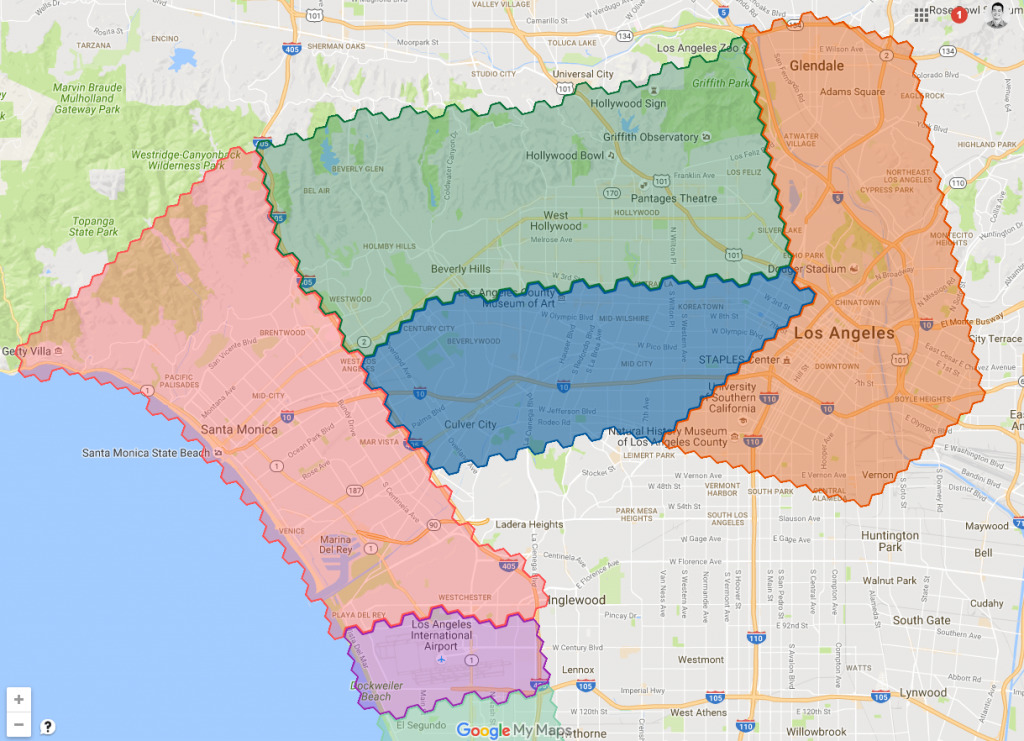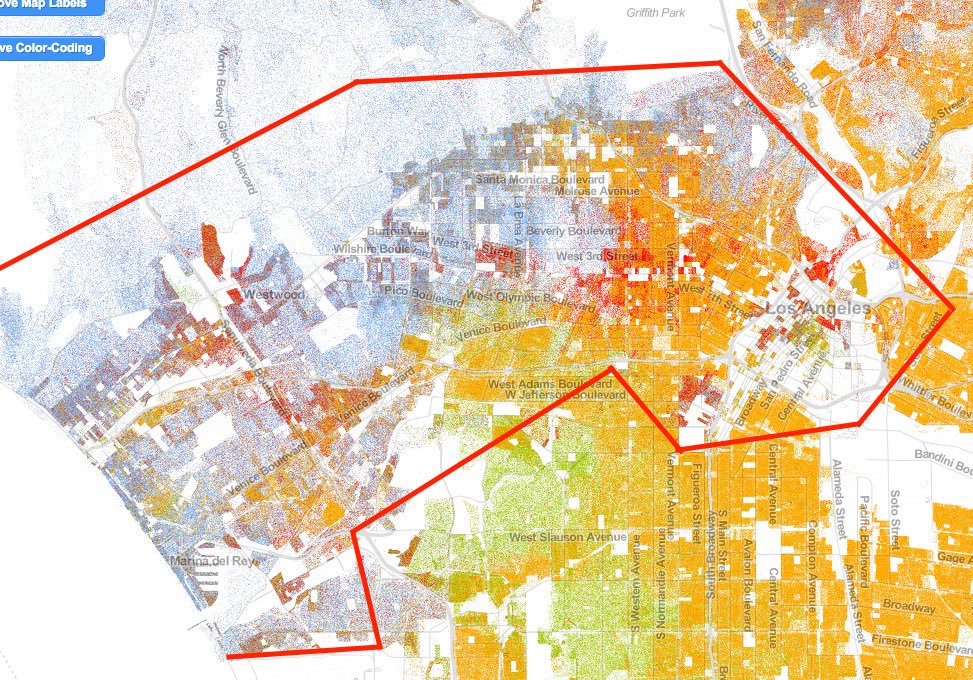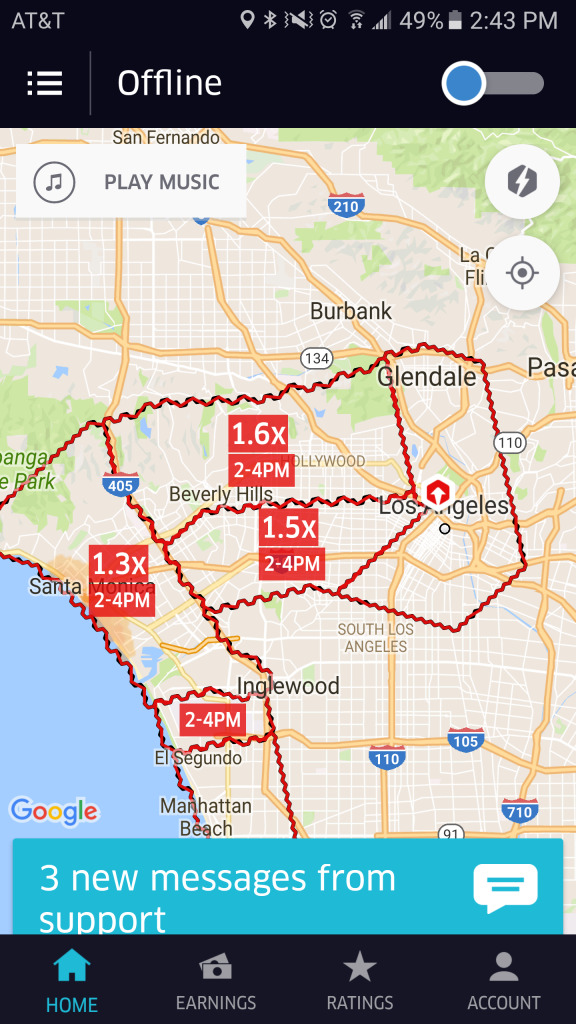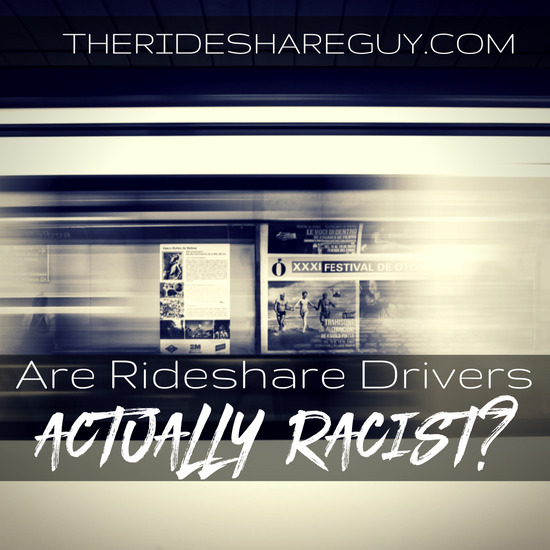Editor’s Note: We’ll be hosting our second monthly YouTube Live Q&A session TODAY at 5 pm PT so please join us . You can subscribe to the YouTube channel here to be notified when we go live OR click here to get an e-mail reminder before the event!
When last week’s big study came out that said rideshare drivers were discriminating against passengers who are minorities, there were a lot of headlines about racist and sexist Uber drivers. But I’ve never met a single driver who told me that they discriminate based on a passenger’s gender, sexual orientation or even race. So I started wondering: where is the disconnect?
Now, it is possible all those “racist” drivers just don’t want to admit they’re racist, but I think there’s a lot more to it than that. In fact, Uber and Lyft’s own policies could be a major contributing factor to the discrimination found in the study by the Stanford and MIT researchers.
Passenger Discrimination Does Happen
Drivers openly talk about discriminating against certain types of passengers, but for reasons that you may not expect. From my own experience as a driver and from talking to thousands of drivers, I know there are certain types of passengers you don’t want in your car, and it often has nothing to do with the color of their skin. Here are the types of passengers drivers do discriminate against and why:
- Low rated passengers: Personally, I won’t accept a 4.6 or below rated passenger in my vehicle (unless it’s slow) and I know many other drivers who do the same. Drivers may not be able to tell the difference between a 4.0 and 5.0 rated passenger on a single trip, but if they’re low rated, it’s probably for a reason.
- Overly drunk passengers: It’s no secret that the busiest times to drive are during the Party Hours on Friday and Saturday nights, but you also know what you’re in for during these shifts. Your typical problematic drunk passenger might try to sneak a beer in the car or slam your door, but that’s part of the job during the Party Hours. But when you have someone stumbling into your vehicle who can barely walk or talk, that’s when I draw the line, since these are the types of situations that can escalate if you’re not careful.
- Passengers who live in bad neighborhoods: This is a controversial one, but as you could imagine, some areas feel a lot safer to drivers than others. Drivers can always see the general pick-up location of a new request, but drivers do not know where the rider’s destination is until they arrive at the rider’s pick up point and physically start the trip. One of the issues that comes up is, what should drivers do about passenger destinations that make them feel unsafe? Personally, I think you should complete any trip you start but, at the end of the day, it’s really up to you as a driver to keep yourself safe. Uber doesn’t exactly do much to assuage driver’s fears in this department either since there are no enhanced safety features like a panic button.
- Passengers with service dogs: I think any driver who knows the rules around service dogs is happy to take a service dog. But since training is a legal gray area for rideshare companies, there isn’t much communication to drivers that tells them they have to accept riders with service dogs. And it doesn’t help when you have passengers who are obviously taking advantage of these rules by bringing in animals that are not service dogs.
Related Video: How does the Uber driver app work?
But What About Driver Discrimination?
This study only looked at the passenger discrimination side of things since frankly that’s really all that was doable. I talked with Stephen Zoepf from Stanford, one of the researchers on the study, and there was a lot of energy, effort and money that went into these results. Getting data from actual drivers would have been nearly impossible without the help of Uber and Lyft.
However, as you could imagine, it’s a good possibility that drivers are unfairly being cancelled on because of their race and, even more importantly, potentially rated lower because of their race too. While passenger ratings don’t mean a whole lot other than a potentially longer wait time for a trip to the bar, drivers have to maintain a 4.6 rating to stay active on the platform, so I’d argue that driver ratings are much more important than passenger ratings.
Uber hasn’t done itself any favors here either since one of the reasons they’ve stated for not implementing an in-app tipping feature is because riders are racist. In that case, it makes sense that many drivers make the claim that the ratings system must also be racist, too then.
What Did this Study Find?
In the recently published study, researchers with “black-sounding” names called for a ride on Uber and found they were cancelled on at higher rates (almost double) than their counterparts who used “white-sounding” names.
If you need a refresher on how the Uber driver app works, you can watch this video. But in short, drivers log on to the app and when they get a new request, all they can see is the name, rating, type of service (UberX, UberPOOL, etc) and approximate pick-up location. Drivers can ignore as many requests as they like without being deactivated but they will get put in “Uber timeout” for ignoring 2 or 3 requests in a row.
Technically, drivers could ignore a lot of passengers with black sounding names and never be punished. But as we highlighted above, there are lots of reasons you might ignore a passenger request. Additionally, you have certain policies enacted by the companies themselves that may be an even larger contributing factor.
Are Drivers Being Incentivized to Discriminate?
I think a lot of the blame in this situation has been shifted to drivers and, although I’m biased, I think it’s unfair. When Uber cut rates in early 2016 for the third year in a row here in Los Angeles (and many other cities), they instituted a series of guarantee and incentive programs that have continued indefinitely. The names have changed from Power Driver Plus to the Medals program to what we have today, Earnings Boost. But the gist of the programs is the same: they incentivize drivers with large bonuses to work in certain areas during certain times.
As someone who lives in LA and studies the Uber market here very carefully, I can tell you that without these bonuses, Uber would have a huge supply problem. In fact, when Uber first cut rates at the beginning of 2016 and hadn’t yet instituted fare guarantees yet, LA was lit up like a Christmas tree with surge for a few weeks. These days, without bonuses, the rates are just too low to have anywhere near enough drivers to meet demand, and that’s why Uber has been subsidizing so many of these fares for drivers in LA (and many other major cities) for all of 2016.
This brings up a couple interesting issues, since one of Uber’s strongest reasons for using the independent contractor designation is that drivers can work wherever and whenever they want. But if you look at the typical structure of Uber’s current Earnings Boost program, you can really only work in certain areas during certain times or you’re relegated to the much lower rates – which we know are not high enough to maintain supply.
Here’s a map of Uber’s boost area in LA – basically you have to work in one of these areas to get a boost and there are no boosts outside of the shaded areas ever.

If you take a closer look at the map above, something else might stand out to you. Uber’s outline of boost zones perfectly lines up with racial demographic lines of the city which you can see below.

These findings were pointed out to me on Twitter in regards to Uber’s new flat fare pricing promotion for passengers, but it’s also something I’ve heard from a lot of Uber drivers in LA and noticed myself too. Based on these two maps, Uber drivers are clearly being incentivized to focus their driving in more ‘white’ neighborhoods and to avoid the green and orange areas (Black and Latino, respectively).
 Now, Uber will claim that they have improved the transportation situation for passengers in these neighborhoods compared to taxis, but is this set up okay?
Now, Uber will claim that they have improved the transportation situation for passengers in these neighborhoods compared to taxis, but is this set up okay?
Here’s what happens in real life: If I’m a driver on the edge of one of the Core LA boost zones (i.e. Culver City), any rides I get to the North will be on a 1.5x boost, but any rides that I get to the South will be at a regular 1.0x fare. You can bet I’m going to ignore any request I get that is in anywhere near South Los Angeles. And, as we can see from the racial demographics map above, there is a high percentage of black residents in South LA, which means I’m going to be ignoring a lot of requests from riders with “black-sounding” names. However, this isn’t because they’re black, but rather because those rides don’t pay me as much.
As one driver put it on my Facebook page, “I only care about one color and that color is green for money”.
We also see this effect on drop-offs too, since drivers don’t have any control over the destination of their passengers. If you’re working in a boost zone and you get a drop-off destination in South LA, most drivers will do the ride, and then turn their app off and return to a boost zone in order to get the higher guaranteed fares. Some drivers will even take it one step further and flat out reject the ride once they find out where the passenger is going or even call/text the passenger ahead of time and ask them where they’re going. Obviously this could lead to longer wait times for passengers outside the core LA area.
I think this strategy is a bit extreme, but financially it doesn’t make a lot of sense to drive 30 minutes out of a boost zone since you’ll have to drive 30 minutes back unpaid. It’s a lot smarter financially to end that trip (and tell the passenger to ask Uber for a refund – although your rating may take a hit) and wait for a new request that’s going to have a drop-off destination inside of the boost zone.
As you can imagine, the existing set up encourages even the drivers who live in these underserved areas to go drive in ‘Core LA’ since that’s where they can make more money. My home base is actually Long Beach, which is about 40-60 minutes south of Core LA, and a lot of the drivers in my area head to core LA every day since that’s where the boosts are.
Some may argue Uber is just going where demand is, but as they start to work with public transportation authorities and tout the value their service can bring to a city, I think it’s important passengers AND drivers are treated fairly. I don’t buy the argument that Uber is an app that merely connects drivers and riders, since they’re obviously doing a lot more than that. They’re manipulating demand, supply and pricing in a way that has the potential to unfairly discriminate against lots of people. I don’t think it’s malicious and probably more the byproduct of “going where the growth is,” but ignorance is not an excuse in my book.
Drivers, what do you think about Uber’s bonus structure that incentivizes drivers to work only at certain times and in certain places? Do you think passengers or drivers discriminate against one another and, if so, what can be done to fix it?
-Harry @ RSG
Save
Save





